Today’s Current Affairs: 9th Sep 2023 for UPSC IAS exams, State PSC exams, SSC CGL, State SSC, RRB, Railways, Banking Exam & IBPS, etc
Table of Contents
Varuna Phase II : Naval Exercise

Phase Il of the Varuna naval exercise between Indian and French Navy was conducted in the Arabian Sea.
- NAVAL EXERCISE VARUNA is the bilateral Naval Exercise between India and France initiated in 1993.
- The exercise witnessed participation of guided missile frigates, tanker, Maritime Patrol Aircraft and integral helicopters from the two sides.
- Units of both navies endeavoured to enhance and hone their war fighting skills, improve interoperability and demonstrate their ability to promote, peace, security and stability in the region.
- The exercise also facilitates operational level interaction between the two Navies to foster mutual cooperation for good order at sea, underscoring the shared commitment to ensuring security, safety and freedom of the global maritime commons.
Cheriyal Scroll Painting:
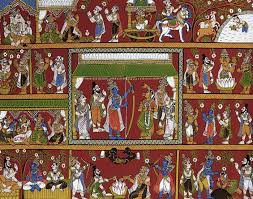
Cheriyal scroll painting will be presented to the spouses of the heads of state from around the world, who will gather for the upcoming G20 Summit.
- Cheriyal scroll painting is a popular and modified version of Nakashi art, considered highly rich in the local motifs.
- This art form is unique to the state of Telangana and made mostly in Hyderabad currently.
- The Nakashis are the artists of Telangana and the scrolls constitute a key element of the social and cultural setting of Telangana.
- This traditional art form is considered an inseparable part of the profession comprising the story-telling and balladeer community called Kaki Padagollu.
- Themes: These scrolls are painted in a narrative format similar to a film roll or even comic strips and depict stories from Indian mythology as well as the shorter stories related to the Puranas and Epics (Mahabharata, Ramayana, Shiva Puranam, Markandey Puranam)
- The Cheriyal paintings represent a distinct local invention, based mainly on local traditions.
- The ballads and folk stories of Gauda, Madiga and other communities.
- These are painted in vivid hues with mostly primary colors, showing a predominance of red colour in the background.
- The main narrative involves scenes from the common rural life such as women performing kitchen chores, men working in fields or experiencing merry, festival settings, etc.
- Artists have displayed these scrolls which are also accompanied by music and dance.
Wide Field Survey Telescope : China
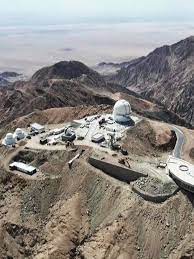
China is set to launch the Wide Field Survey Telescope (WFST) in September.
- Wide Field Survey Telescope is the largest time-domain survey facility in the Northern Hemisphere.
- The core scientific objective is to explore and monitor dynamic astronomical events and conduct time-domain astronomical observation research.
- This will enable researchers to detect faint and distant celestial signals, including those from galaxies beyond the Milky Way and galaxy clusters.
- It will also seek out planets or their moons in the Kuiper Belt and beyond.
- It has set out to find and track 10 lakh solar system objects for a comprehensive view of the solar system and its evolution.
- The telescope is located at the Lenghu astronomical observation base in northwest China’s Qinghai Province.
- The base, which sits at an average altitude of about 4,000 meters, offers optimal conditions for stargazing due to its clear night skies, stable atmospheric conditions, dry climate, and minimal artificial light pollution.
- It is recognised as one of the best observatory sites on the Eurasian continent.
- The WFST project was launched in July 2019 through a collaboration between the University of Science and Technology of China and the Purple Mountain Observatory under the Chinese Academy of Sciences.
Clade 9 Variant Of Varicella-Zoster Virus:
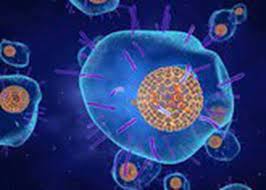
Indian Council of Medical Research-National Institute of Virology scientists, have for the first time in the country, found the presence of Clade 9 variant of varicella-zoster virus (VZV).
- Varicella Zoster Virus is a herpes virus that causes chickenpox, a common childhood illness.
- It is an exclusively human virus that belongs to the α-herpesvirus family.
- It is present worldwide and is highly infectious.
- Primary infection of this virus leads to acute varicella or “chickenpox”.
- The infections can progress to the central nervous system involvement and severe complications.
- Chickenpox is a highly contagious disease.
- It can cause an itchy, blister-like rash, among other symptoms.
- The rash first appears on the chest, back, and face and then spreads over the entire body.
- The virus is spread by:
- Coming in contact with someone who has chickenpox.
- Breathing air from an infected person who sneezes or coughs.
- Coming in contact with fluids from an infected child’s eyes, nose or mouth.
- The incubation period of chickenpox is from 10 to 21 days
Meniere’s Disease:

Hong Kong singer Jacky Cheung recently collapsed on stage during a concert recently, which was later attributed to Meniere’s disease, which causes dizzy spells, also known as vertigo.
- Meniere’s Disease is a rare inner ear disorder.
- It is the result of a build-up of fluid in the inner ear, called labyrinth.
- It contains the organs of balancing and hearing.
- The fluid build-up in the labyrinth interferes with the normal balance and hearing signals between the inner ear and the brain.
- It can lead to severe dizziness (vertigo), ringing in the ears (tinnitus), hearing loss, and a feeling of fullness or congestion in the ear.
- It usually affects only one ear.
- Ménière’s disease can develop at any age, but it is more likely to happen to adults between 40 and 60 years of age.
- Major Symptoms: Vertigo is the most debilitating symptom and is a severe spinning sensation that can cause:
- Severe nausea;
- Vomiting;
- Sweating;
- Ménière’s disease symptoms get worse over time and may cause permanent hearing loss and ongoing balance problems.
First Transit Card Of Nation:

State Bank of India has launched its ‘Nation First Transit Card’, a RuPay prepaid instrument under the National Common Mobility Card (NCMC) that can be used nationwide.
- Nation First Transit Card aims to facilitate a seamless and convenient customer commuting experience and ensure easy digital ticketing fare payments in metro, buses, water ferries, parking, etc., through a single card.
- In addition, individuals can also use this card for making retail and e-commerce payments.
- It is powered by RuPay and National Common Mobility Card (NCMC) technology.
- National Common Mobility Card (NCMC) feature enables the Bank’s customers to use their Debit Cards as travel cards for travelling on Metro Rail and Buses where this facility is enabled.
- The idea of NCMC was floated by the Nandan Nilekani committee set up by the Reserve Bank of India (RBI).
- NCMC is an initiative of the Ministry of Housing and Urban Affairs in India designed to promote cashless transactions and offer a unified payment platform for commuters.
- It was launched on March 4, 2019.
- It offers a unified contactless transport solution through the RuPay platform, developed by the National Payments Corporation of India (NPCI).
- NCMC is an automatic fare collection system. It will turn smartphones into an inter-operable transport card that commuters can use eventually to pay for Metro, bus and suburban railway services.
Swachh Vayu Survekshan 2023:
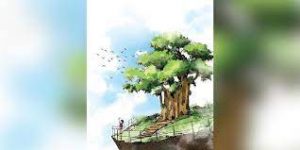
The awards for Swachh Vayu Survekshan (Clean Air Survey) 2023 were announced. The survey was conducted by the Central Pollution Control Board (CPCB).
Key Findings :
- Swachh Vayu Survekshan (SVS) is a new initiative by the Ministry of Environment, Forest and Climate Change (MoEFCC) to rank cities on the basis of air quality and implementation of activities approved under the city action plan (NCAP) in 131 non-attainment cities.
- Cities are declared non- attainment if over a 5-year period they consistently do not meet the NAAQS for PM10 or NO2.
- The categorisation of cities has been based on the 2011 population census.
- Top 3 cities under 1st category (million plus population): Indore followed by Agra and Thane.
- Worst Performers: Madurai (46), Howrah (45) and Jamshedpur (44)
- Bhopal ranked 5th and Delhi ranked 9th
- Top 3 cities under 2nd category (3-10 lakhs population): Amravati followed by Moradabad and Guntur.
- Worst Performers: Jammu (38), Guwahati (37) and Jalandhar (36)
- Top 3 cities under 3rd category (<3 lakhs population): Parwanoo followed by Kala Amb and Angul.
- Worst Performer: Kohima (39)
Global Fintech Fest 2023:
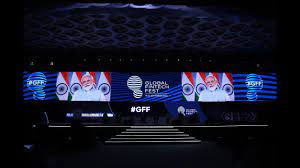
The Union Finance & Corporate Affairs Minister addressed the Global Fintech Fest 2023 in Mumbai.
- The importance of global cooperation in addressing threats to the Global Financial Ecosystem is highlighted.
- India Under the G20 Presidency has sought for global cooperation and collaboration in the areas where we have continued challenges.
- Global Fintech Fest (GFF) is the largest fintech conference, jointly organized by the National Payments Corporation of India (NPCI), the Payments Council of India (PCI), and the Fintech Convergence Council (FCC).
- Aim is to provide a singular platform for fintech leaders to foster collaborations and develop a blueprint for the future of the industry.
- GFF is a platform where policymakers, regulators, industry leaders, academics, and all major FinTech ecosystem stakeholders converge once a year to exchange ideas, share insights, and drive innovation.
- GFF’23 Theme: Global Collaboration for a Responsible Financial Ecosystem.
- The theme of GFF 2023 highlights the critical need for global collaboration to build a financial ecosystem that is inclusive, resilient, and sustainable.
Fintech:
- Fintech (Financial technology) is used to describe new technology that seeks to improve and automate the delivery and use of financial services.
- The key segments within the FinTech space include Digital Payments, Digital Lending, BankTech, and Cryptocurrency.
- FinTech spans various sectors, including education, retail banking, fundraising, nonprofit, and investment management, making it a rapidly growing industry with significant business expansion and job creation.
Gati Shakti Vishwavidyalaya (GSV) Vadodara:

Indian Railways’ Gati Shakti Vishwavidyalaya (GSV) Vadodara has signed a Memorandum of Understanding (MoU) with Airbus to strengthen the Indian aviation sector.
- The MoU was signed in the presence of Shri Ashwini Vaishnaw, Minister of Railways, Communications, Electronics, and IT, who is also the First Chancellor of Gati Shakti Vishwavidyalaya.
- Gati Shakti Vishwavidyalaya is a Central University established through an Act of Parliament in 2022.
- It replaces the National Rail and Transportation Institute (NRTI) and is sponsored by the Ministry of Railways.
- The Chancellor of GSV is the Union Minister of Railways.
- GSV is the first-of-its-kind university with a mandate to create high-quality talent for the transportation and logistics sectors.
- Its significance lies in fulfilling the objectives of the National Developmental Plans, including the PM Gati Shakti National Master Plan 2021 and National Logistics Policy 2022, covering railways, shipping, ports, highways, roads, waterways, and aviation.
Airbus:
- It is the world’s largest manufacturer of commercial aircraft and a leading producer of helicopters, defence, and space equipment.
- Airbus has recently partnered with Tata to establish a C295 aircraft facility in Vadodara, Gujarat, focusing on design, innovation, manufacturing, and development in India.
Sandes App : Delhi Police

Delhi Police’s official communication on G20 security arrangements will now take place on an Indian instant messaging platform, Sandes.
- On this app Sandes, users can only access information and cannot forward it to anyone whose number is not registered on the app.
- Sandes is a secure and user-friendly messaging platform. It has been designed to provide a reliable and efficient means of communication among various government organizations.
- The first version of the app was released by the National Informatics Centre (NIC) in 2020.
- The launch of the app is also a part of the government’s strategy to push for the use of India-made software so as to build an ecosystem of indigenously developed products.
Human Embryo : Grown Artificially

Scientists have managed to grow a human embryo-like structure in a laboratory without using traditional sperm or eggs.
- This achievement involved using a combination of stem cells, which can differentiate into various cell types, and chemicals to create an embryo-like structure that mimics the molecular characteristics of an early human embryo.
- The process involved a mixture of stem cells and chemicals, with only 1% of the mixture spontaneously forming different types of cells needed for foetal development, including those providing nutrients, those guiding body development, and cells responsible for structures like the placenta and umbilical cord.
- The significance of this research lies in the fact that ethical constraints make it challenging for scientists to study the early stages of embryo development after implantation in the uterus.
- These early stages are crucial because most miscarriages and birth defects occur during this period.
- These lab-grown embryo-like models cannot be used for pregnancy, and they are typically destroyed after 14 days of study, in line with legal and ethical regulations in many countries.
- The 14-day limit on embryo research corresponds to the point when embryos naturally complete implantation and become individuals.




